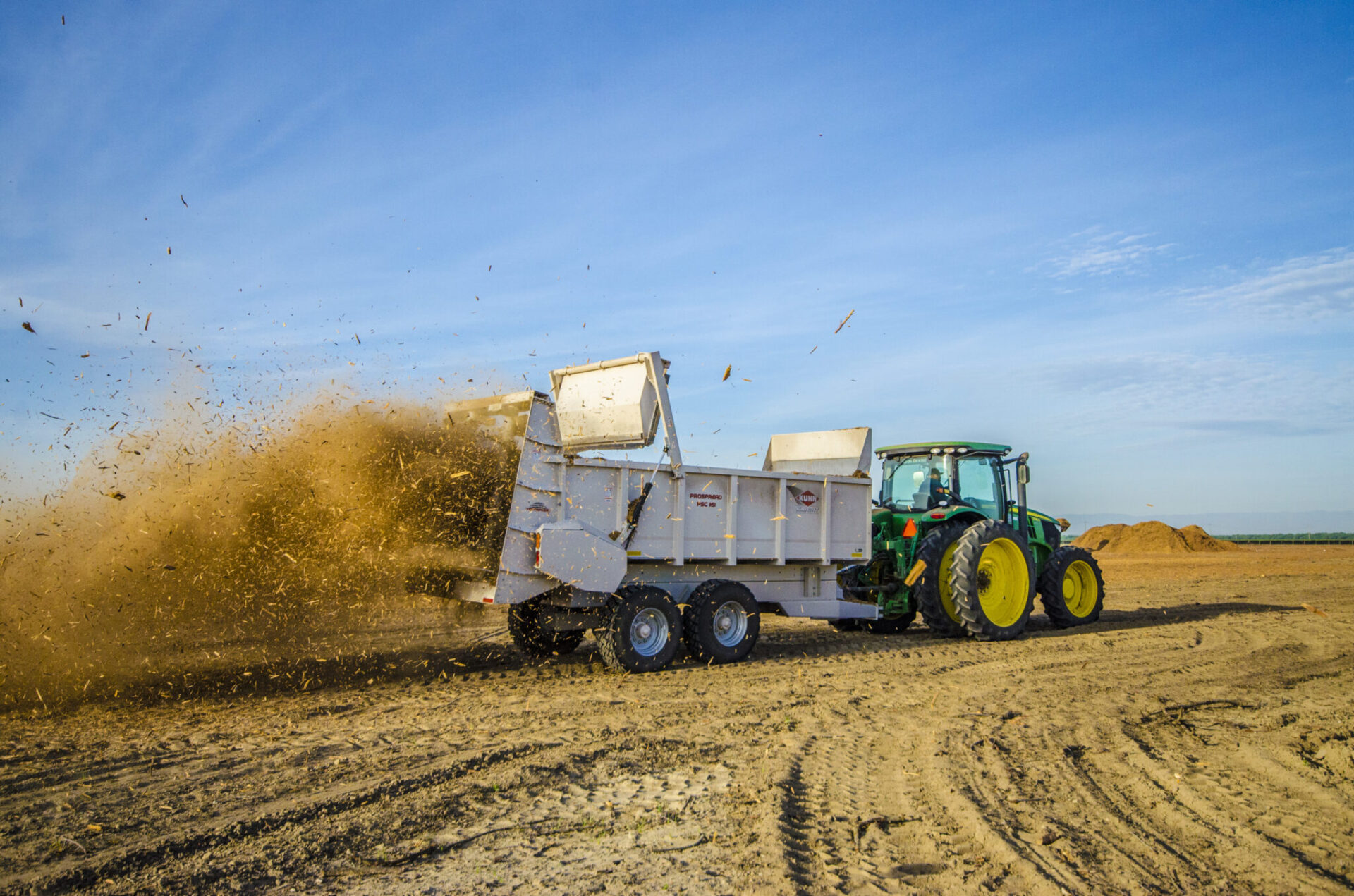
Questions regarding whole orchard recycling (WOR) continue to be addressed in UC studies as growers embrace the practice.
Common questions growers have revolved around replanting after WOR, including benefits to soil, chip preconditioning, fertilization, wood decay diseases, wood chip interference with harvest and fumigation.
UCCE Fresno County Farm Advisor Mae Culumber provided answers and clarification to these questions in a presentation during West Coast Nut’s Almond Day 2021.
How will adding woodchips benefit the soil? Culumber said that woodchips can improve soil aggregation, porosity and water holding capacity.
“Sources of organic matter, not just woodchips, help to improve those characteristics,” she said. “They provide a source of energy for microorganisms to begin that decomposition process, and the microorganisms in return produce substrates that act as sort of like a glue for soil particles, giving it structure, tilth and porosity, all those things we associate with a better environment for tree roots.”
Microorganisms can’t begin the decomposition process until the soil carbon to nitrogen (C:N) ratio is at an acceptable level. There is currently no data supporting a need for preconditioning woodchips to lower C:N; however, Culumber said that amending woodchips with dairy manure and first-year fertigation or fallowing for one to two years can bring down the ratio to a more acceptable level for decomposition to take place.
Recognizing that fallowing isn’t an option for many growers, Culumber said that normal conditions may still suffice for lowering carbon levels. “[In several trials], we’re finding a really rapid decline in that C:N ratio even in the first one to two years under normal irrigation and fertigation conditions,” she said.
In first-leaf replanted orchards, some growers asked about the amount of fertilization required for trees. Current data suggests that more nitrogen than the standard amount per tree is recommended. However, use caution with applications and do not apply more than 1 ounce per tree per fertilization to avoid burning young tree roots. Small frequent doses are better for overall tree growth during establishment than large slugs.
“Right now, our data suggests that four to five ounces per tree compared to that standard recommendation of three ounces per tree is probably going to be more than adequate,” Culumber said. “The important thing is to start applying early soon after planting.”
However, use caution with applications and do not apply more than one ounce per tree per fertilization to avoid burning young tree roots. Small, frequent doses are better for overall tree growth during establishment than large slugs.
Another concern when incorporating woodchips from WOR is wood decaying disease. Larger woodchips have a higher chance of fostering disease, especially in orchards with a history of Ganoderma. Culumber again recommends fallowing one to two years in orchards with a history of disease, but notes that wood chips usually aren’t large enough after grinding and incorporation for disease to occur.
Culumber said her studies showed WOR does not seem to add excessive debris to harvested almonds. Recent subsampling conducted by Culumber found that 91% of a sampled harvest consisted of almond hulls and shells, with only 2.7% woodchips, a much smaller number than previous concerns suggested.
Lastly, some growers wonder whether or not fumigation is still needed in orchards replanted after WOR. “There are often, but probably not always, benefits of fumigation regardless of whether or not WOR was conducted. For nematodes, a proper soil sample for determining of risk for damage is necessary to inform the decision to fumigate before planting a new orchard,” Culumber said.
















